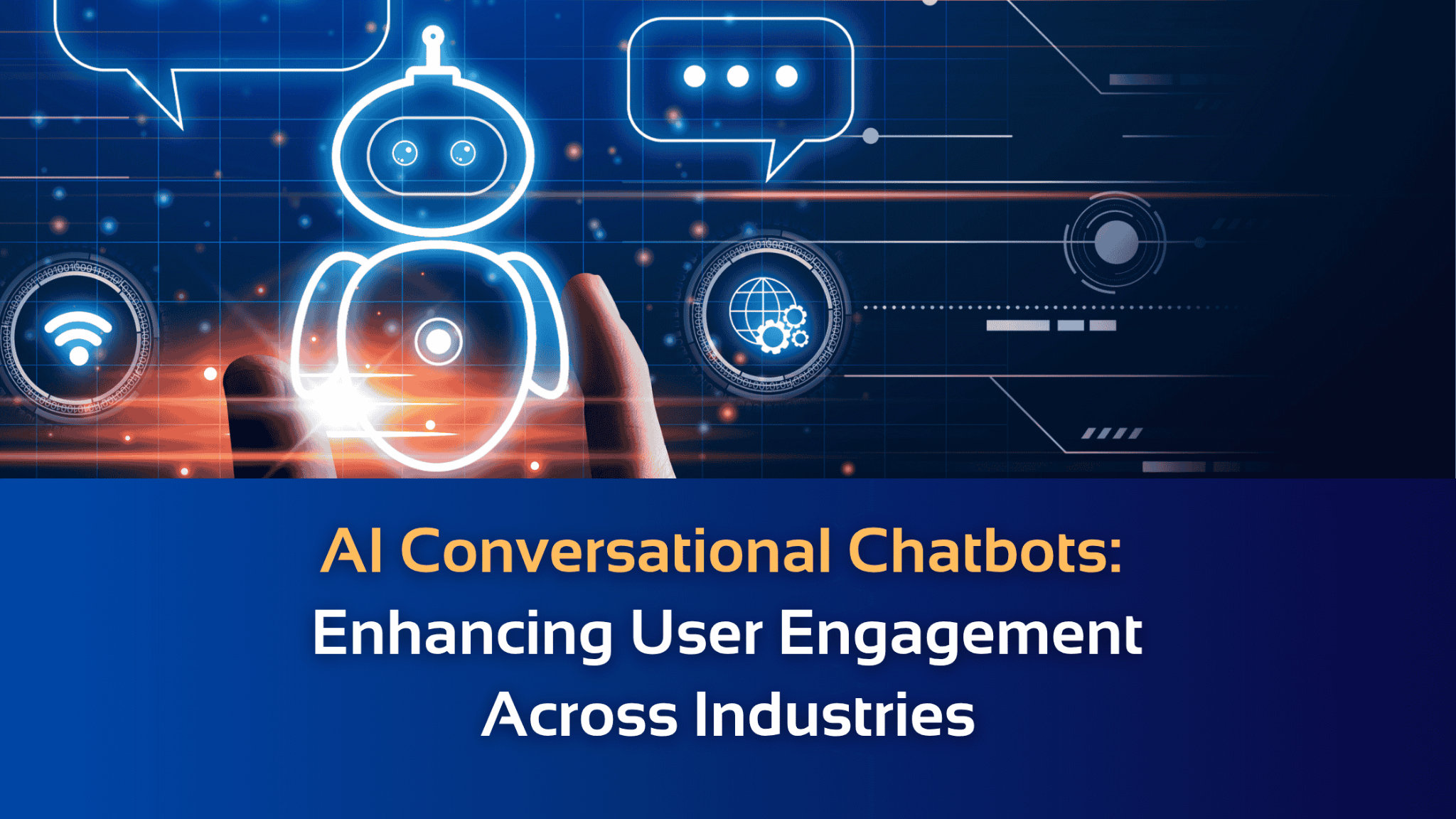AI Conversational Chatbots: Enhancing User Engagement Across Industries

Have you noticed how conversational AI chatbots are popping up everywhere—from banking apps and e-commerce sites to hospitals and government portals? What began as simple FAQ bots has now evolved into sophisticated virtual assistants capable of understanding context, engaging in personalized interactions, and automating workflows.
It’s no wonder that businesses across industries are adopting AI chatbot solutions to improve customer engagement and reduce operational costs. But what exactly are these chatbots capable of? And what developments lie ahead?
In this article, we explore the growing role of AI conversational chatbots across industries and how they are transforming customer engagement.
What Is an AI Conversational Chatbot?
AI chatbots are advanced software applications that mimic human conversation using machine learning (ML) and natural language processing (NLP). Unlike earlier versions that stuck to rigid scripts, today’s AI-powered assistants can understand context, grasp user intent, and provide natural, intelligent responses.
Their ability to learn from interactions enables them to:
- Tackle challenging questions
- Guide users through complex processes
- Continuously improve over time
This dynamic intelligence makes them invaluable assets in enhancing customer experience and streamlining business operations.
Industry Applications: Enhancing User Interaction Across Sectors
AI chatbots have found powerful use cases across a wide array of industries. Here are some notable examples:
Retail & E-commerce
Retail giants like Walmart are incorporating AI shopping bots into their apps to help customers find products, summarize reviews, and answer queries—all in real time. During the 2024 holiday season, U.S. online sales grew by 4%, with chatbot interactions increasing 42% year-over-year.
Bottom line: Intelligent, efficient service is what customers expect, and AI chatbots are delivering.
Banking & Financial Services
Banks deploy AI chatbots to provide 24/7 support—from balance checks to personalized financial guidance. This frees up human agents to handle more complex tasks, enhancing both efficiency and customer satisfaction.
Healthcare
In the medical field, chatbots assist with patient intake, answer health-related questions, and help create clinical notes. The result: faster, more consistent support and improved workflow management.
Travel & Hospitality
Travel chatbots can book flights, manage itineraries, and provide multilingual support across time zones. These real-time interactions help increase customer satisfaction and loyalty.
How AI Chatbots Boost Customer Engagement
Let’s break down the key features that make AI chatbots effective in driving user engagement:
1. 24/7 Availability
Unlike human agents, chatbots don’t sleep. They provide instant responses around the clock, reducing customer frustration and boosting brand loyalty. With 60% of shoppers preferring 24/7 service, this is a major competitive advantage.
2. Personalized Interactions
AI chatbots can tailor responses based on user data—like shopping history and preferences—offering suggestions and support that feel truly personalized. This can lead to a 70%+ increase in engagement and conversions.
3. Efficient Issue Resolution
AI assistants can handle multiple conversations simultaneously, instantly resolving common queries and supporting human agents with real-time information. This leads to:
- Shorter wait times
- Improved satisfaction
- Higher agent productivity
4. Proactive Support
With agentic AI, chatbots can anticipate user needs. For instance:
- Notifying users of expiring subscriptions
- Offering discount codes at checkout
- Reaching out to customers showing signs of churn
This kind of proactive behavior can significantly enhance customer retention and conversion rates.
Emerging Trends in Conversational AI
The evolution of AI chatbots is far from over. Here are the most promising developments shaping their future:
1. Voice-Enabled Chatbots
Voice recognition is enabling hands-free interactions. Think Siri or Alexa—only now integrated into customer support and business platforms.
2. Multilingual Capabilities
With globalization, chatbots that communicate in multiple languages open doors to broader markets and customer bases.
3. Integration with IoT Devices
From smart homes to wearables, chatbots are becoming the interface for IoT. Users can control devices, receive updates, and manage settings through natural language commands.
4. Emotional Intelligence
AI is beginning to recognize and respond to human emotions. This makes chatbots ideal for sensitive tasks such as mental health support or complaint resolution, where empathy is essential.
Measuring Chatbot Effectiveness
To ensure success, businesses must track performance. Here are key metrics to monitor:
- Customer Satisfaction Score (CSAT): Measures satisfaction after an interaction.
- First Contact Resolution (FCR): Tracks how often issues are resolved in one session.
- Average Handling Time (AHT): Evaluates how quickly a chatbot resolves inquiries.
- Conversion Rate: Indicates the percentage of chatbot interactions that lead to sales or signups.
- User Retention Rate: Shows how often users return to the chatbot over time.
Tracking these KPIs helps businesses refine chatbot performance and align with evolving customer expectations.
Conclusion
AI-powered conversational chatbots have revolutionized user engagement across industries by providing quick, intelligent, and personalized support.
As innovations like voice interaction, multilingual processing, IoT integration, and emotional intelligence become mainstream, chatbots will continue to grow smarter and more intuitive—blurring the line between human and digital support.
For companies looking to stay competitive, now is the time to embrace conversational AI—not just as a support tool, but as a vital partner in the customer experience journey.
Want to know more? Reach out to the Quickblox team for insights on how conversational AI and chatbot solutions can drive engagement, streamline operations, and transform your digital customer experience.






